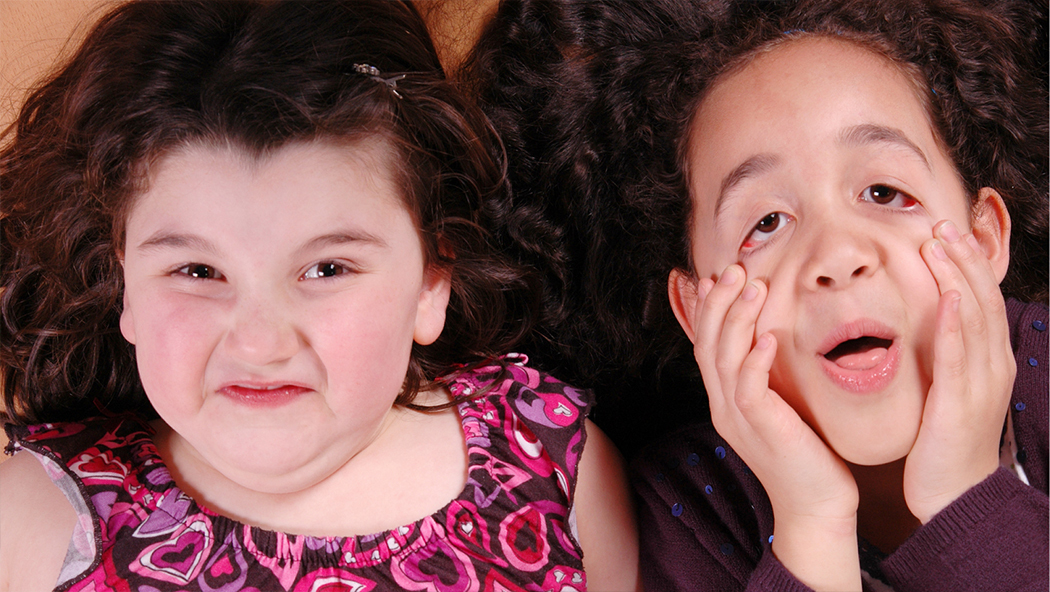The muscles used for breathing, sucking, chewing and swallowing are the same muscle systems that work for speech, in fact they are the precursors to speech! Although the mechanisms for all of these functions are not as simple as ‘move muscle A to position B’. There are more complex brain processes that govern speech, not to mention the interplay between speech and language.
However, atypical speech habits may develop in conjunction with myofunctional (the range and control of muscle movements) disorders of the mouth face or throat, or simply because the right conditions or environment or habits are not in place. Given the anatomy and functions of the face mouth and throat, a myofunctional disorder may arise from challenges related to the anatomy (shape and size of structures in the upper airway), tissues that line the upper airway or the muscles that move within those spaces.
Development of intelligible speech sounds into words and sentences is essential to clear communication. The ability to produce clear speech sounds is connected to the use of the muscles of the face mouth throat and larynx. Babies imitate facial movement very early, so the sooner your baby starts imitating sounds and copying your exaggerated faces and voices, the sooner and more fully they are activating the upper airway muscle systems, contributing to both upper airway health and communication development. There rare many things happening in the upper airway besides breathing, eating and speech, what about coughing, laughing, yawning? There are many more and each function has a unique expression in the upper airway using different muscles but if we look at, for example, a good belly laugh, it opens up the throat muscles.
Most babies start vocalising from two to three months old. Broadly speaking, children start using single words around twelve months of age, then start stringing two words together into an ever-increasing vocabulary by age two.
The Kalahari Bushmen have broad jaw structures encouraged by their click language. Many kids I see in clinic cannot elevate the tongue to the roof of the mouth, nor can they make a nice loud sharp click or cluck sound because they have narrow jaws or poor tongue control or both! Yet tongue elevation is critical. Remember the Kalahari bush kids with beautiful, broad, well-developed palates? Our kids need that too.
What can you do?
There’s a lot you can do, but with babies it starts with mimicking sounds in a two-way process. So, when your baby starts sound play, cooing and gurgling, coo and gurgle back because it encourages more of the same – a real two-way interaction. Babies love making all sorts of sounds. They find many new sounds in their own sound play. As soon as you hear it, make a fuss, imitate it, have fun – encourage your child to do lots of clicks, clucks and smiles.
This early sound imitation will not only help develop speech, mouth & facial muscle control, and verbal skills, but it will also create a sense of fun and connection and ‘conversation’ between the two of you. It is also very important to eliminate or limit dummy use; when there’s a dummy or thumb or fingers in the mouth, not much sound play can happen.
As your baby starts to make a wider range of sounds, mimic them and add more vocal intonation into your own speaking (so make your speaking voice musical and interesting). Babies love to hear the music of voice.
Whenever your baby vocalises or ‘talks’, vocalise and talk back to them. Get in the habit of explaining the world around you, in adult speak, but also add in elements of dramatisation and exaggeration – be silly and make lots of faces that your baby will start to follow.
Have fun – encourage your child to do lots of clicks, clucks and smiles
Myo Optimise is all about How to Build A Healthy Airway, the ‘Myo’ way, at the earliest possible age
We could say that this begins with that very first idea, that a couple may want a child, because it begins with the health of the mum and the dad, and has great bearing on the health of the baby at conception and throughout the pregnancy.
A baby is ‘rehearsing’ breathing swallowing and sucking while still inside the mummy’s tummy, but it’s particularly important in the third trimester, and especially in the 38-40 week period in utero. This essential rehearsal prepares a baby for sucking and breast feeding at birth, which is critical for development of the face and jaws and airway.
Alongside feeding, humming, singing, talking, laughing and ‘clucking’ all activate the muscles of the mouth, face and throat, as do speech, voice, facial expression, chewing, sucking and swallowing. They all contribute to developing a healthy upper airway.
Games and Activities that Promote an Open Airway
Kids have a lot of fun making sounds and pulling faces, which is terrific, as these activities are so helpful for upper airway development. In the same way you may take your child to the park to play, have fresh air and get strong, face and mouth ‘gym’ can optimise the muscles, help kids be more aware of the muscles and develop control. Remember, these activities are for kids who do not have a diagnosed problem.
If your child is in therapy, this approach can supplement traditional speech, sound or phonological therapy, especially when where your child is not progressing, and it is great for kids with low muscle tone. If you want to do some extra activities that are fun, try some of the following resistance exercises, which we use in my clinic to promote movement and action at the back of the throat:
- Cheek balloons: Fill up your cheeks with air, then try to hold the air as someone pops them. You can also do this activity with water, make a water pump.
- Cheek pokes: Push your tongue into your cheek while someone pushes against your tongue from outside the cheek.
- Suck thick liquids: Try drinking a thick smoothie with a wide straw.
- Blow bubbles into thick liquids: Try blowing bubbles into a thick smoothie with a wide straw.
- Blow up balloons: Use a one-way valve to help blow up a balloon, or blow up a balloon and seal the opening with your lips in between blows. Make sure it’s a nose breath then a blow.
- Play wind instruments: Play, play, play, making sure your child is taking a breath in through the nose in between each blow.
- Try ‘Lady and the Tramp’ pasta noodle scoop: Remember the Disney movie scene where the romancing dogs scoop the noodle with their lips and end up kissing? This can be done with al dente pasta noodles, long peel from apples or carrots or any other long, stringy food. (Original exercise created by speech language pathologist Dan Garliner.)
In the clinic, I always talk about ‘chipping away, a little every day to build new habits and skills.’ Families manage best with all these suggestions and activities when they are integrated into what you do daily anyway: bath times, meal times, play times or car trips.
Myo-Optimise is an approach designed and developed by Sharon Moore at Well Spoken. With myo-optimise, there is so much you can do with your little people as part of everyday life. However, if you want assistance, find an experienced myofunctional practitioner close by and they will help you by providing guidance, accountability and lots of strategies to get myo-optimise working for your family.
The impacts of this therapy on a child’s speech, also have spin offs for everyday life as well, better breathing during sleep, more efficient chewing and swallowing, clearer speech. In fact, parents can benefit too. Recently one parent who had their child in clinic and did all the exercises with her little one stopped snoring!
When working with kids in the clinic, I discover that many parents have poor myofunctional habits that they become aware of during our sessions and they benefit from doing the training too, starting with foundation exercises until the patterns become completely automatic.



